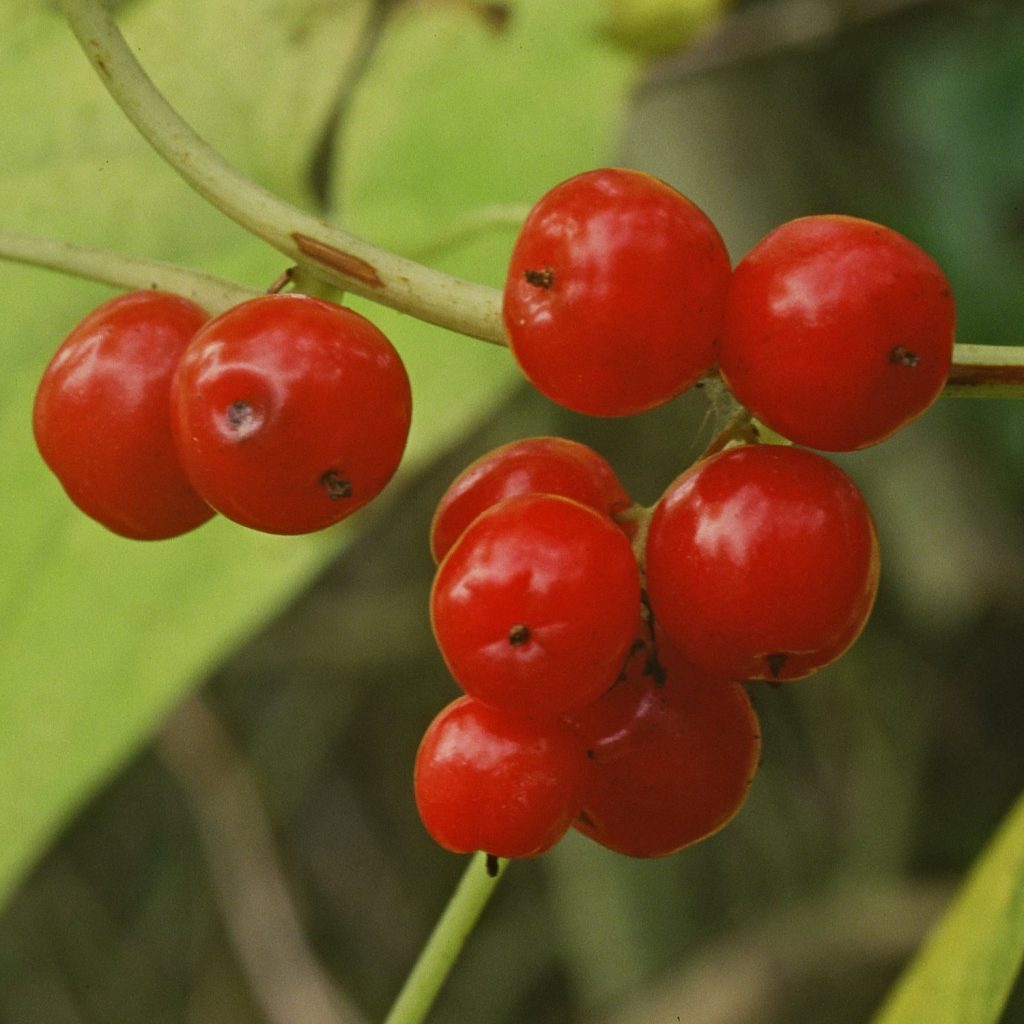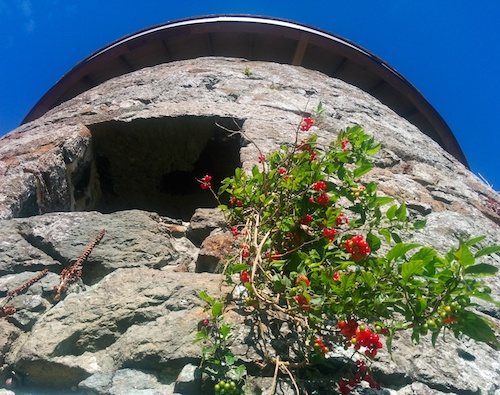
Autumn is setting in, which means it’s almost berry season! You can look forward to Elder, Hawthorn, Holly, and the lovely but poisonous red berries of Black Bryony (pictured).
Photo: © Natural England/Peter Wakely
Scientific name: Tamus communis
Other common names: Lady’s Seal, Black Bindweed
What to look for:
• Family: Dioscoreaceae (Yam family)
• Flowers and berries: Black Bryony is dioecious (separate male and female plants). The small, yellowish-green flowers are produced in racemes from the leaf axils, with female flowers in shorter clusters than the longer clusters of male flowers. The red berries produced in the late summer and autumn are poisonous.
• Leaves: The heart-shaped, pointed leaves, up to 10 cm long, are a glossy deep green
• Height: Up to 40 cm.
• Where: Common in England and Wales, in open woods, woodland edges, hedgerows, and scrub; prefers neutral or calcareous well-drained soils. Native to south and central Europe, northern Africa and western Asia.
• When: Flowers from May to August.
• Habit: Climber, on twining stems.
• Similar to: White Bryony (Bryonia dioica), which, despite its similar common name, is in a different family, and can be distinguished as, unlike Black Bryony, it climbs using tendrils, and also has palmate-lobed leaves.
Why Black Bryony? The flowers are a pale greenish-yellow, the leaves are a glossy rich green, and in the autumn the berries are red. The name, in fact, refers to the part you can’t see. The plant grows from underground tubers, up to 4” in length, and these are black, hence the common name.
Both tubers and berries are poisonous when eaten. In extreme cases, if ingested in large amounts, they could even cause death, but more usually a blistering, purgative irritation. Best, then, on a clear autumn day, to stand back and admire the cheerful bright scarlet of the berries against a blue sky.
Black Bryony is a member of the Yam family, of which it is the only native UK representative.
Did you know…?
…Black Bryony always twines up its support in a clockwise direction.
…In traditional medicine, the tubers have been used in the past as a treatment for bruising.

More information and references:
Rose, F. and O’Reilly, C., 2006. The Wild Flower Key, 2nd edition. Frederick Warne, London.
Published: September 2017
Author: Amanda Scott
Photos: Upper © Natural England/Peter Wakely; lower – at Windmill Farm on The Lizard (Dougy Wright)
